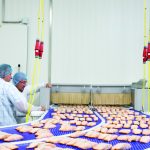Equans developed a new deep-freeze tunnel for Rodé Fish in Urk with three objectives in mind: expand and replace the deep-freeze capacity, improve the product quality and make the production process sustainable. The result? A modern deep-freeze tunnel with double capacity and reduced energy consumption. Tjeerd Hoekstra, Managing Director Rodé Fish: ‘For us, quality is a top priority. And Equans delivered on all its promises.’

Rodé Fish in Urk was so successful that its deep-freeze tunnel had become too small for the 1200 tons of fish that the company processes every year. A new, larger deep-freeze tunnel was needed. But Rodé Fish wanted more than that. It also wanted a more sustainable production process. The old deep-freeze tunnel ran on the synthetic R22 refrigerant, which may no longer be used from 2015 onward.
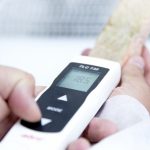
‘Sustainability has always been important to us,’ says Tjeerd Hoekstra, Managing Director of Rodé Fish. ‘But quality is our top priority. Added to that, our parent company, the Norwegian Leroy Seafood Group (LSG), is setting environmental targets and we want to meet them. LSG cultivates the fish in a natural way in its own fjord in Norway, from eggs to fully-grown salmon. And not only is the process sustainable, LSG also supplies top quality salmon.’
With its four processing factories − three in Urk and one in Enkhuizen − Rodé Fish is an important player in the market for smoked and marinated fish products in Europe. Since being taken over by LSG in 2011, the company has grown enormously. It asked Equans to increase its deep-freeze capacity and make the entire process sustainable at the same time.
‘Equans convinced us to set up a test facility with an injection freezer that uses propane CO2 as a refrigerant,’ continues Hoekstra. ‘That’s a very environmentally-friendly refrigerant.’
‘In Equans’s test facility, we were able to see the effect on the quality of the fish. And I have to say, the quality couldn’t be better. The frequency regulator can be used to gear the intensity of the freezing process to each individual fish species, dimensions and processing methods (deep-frying, baking or steaming). This keeps the structure of the fish intact, which in turn guarantees high product quality.
Depending on the desired freezing temperature and intensity, the intelligent operating system automatically adjusts the settings in the deep-freeze tunnel so that the refrigeration is generated under the most optimal conditions. This optimises the energy yield of the deep-freeze tunnel, thus saving a huge amount of energy.
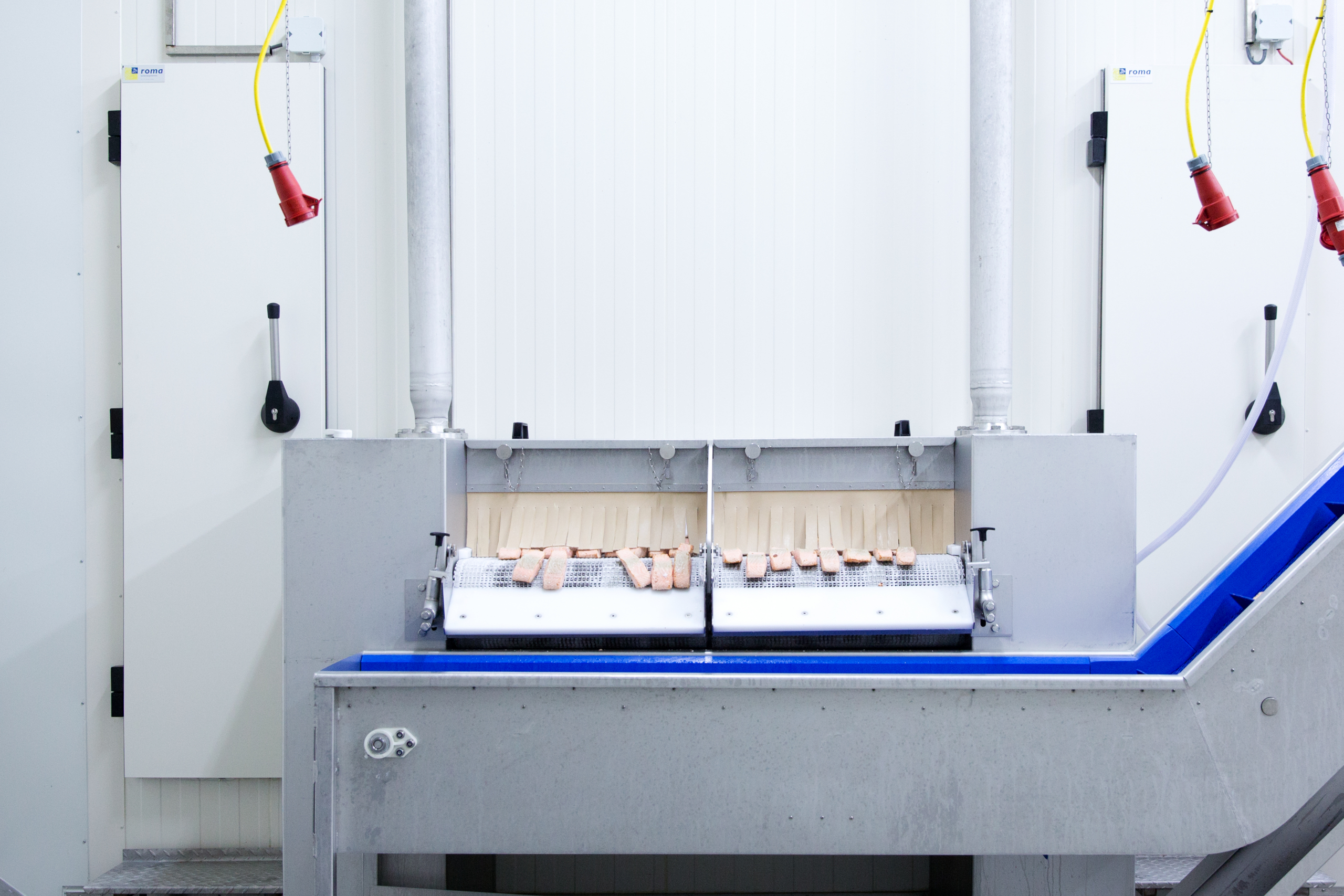
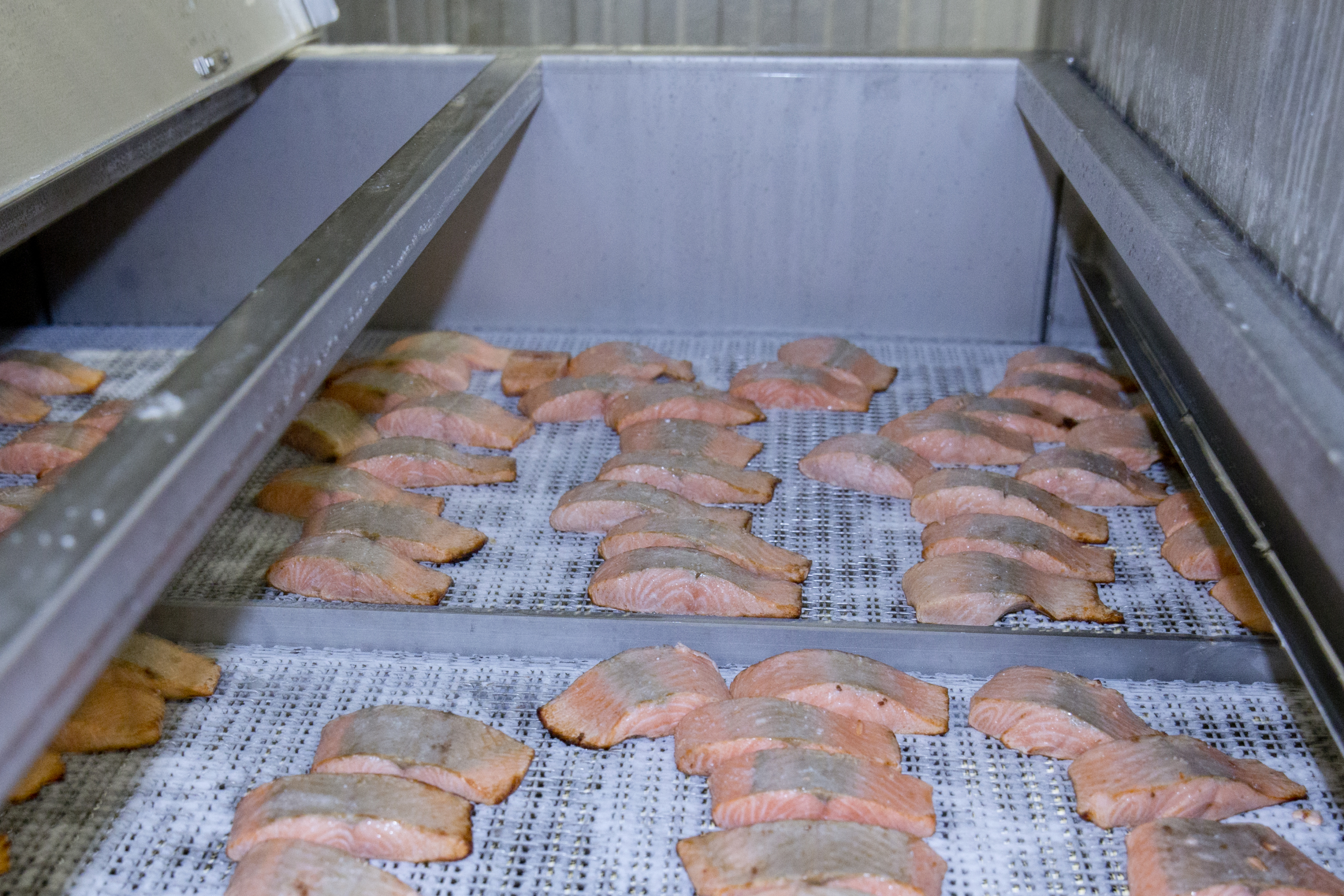
The deep-freeze process has also become much more efficient. Hoekstra: ‘The time taken to freeze the fish product is now a maximum of 20 minutes. That’s a reduction of seventy percent. And the start-up time for the deep-freeze tunnel has been more than halved.’
The deep-freeze tunnel has two conveyor belts that can run both synchronously and in opposite directions. That makes it possible to freeze different types and sizes of fish at the same time.
A frost blowing system prevents the development of frost on the conveyor belts. Frost has a negative effect on the air circulation. By using the frost blower, several shifts can be run successively without having to defrost the tunnel.
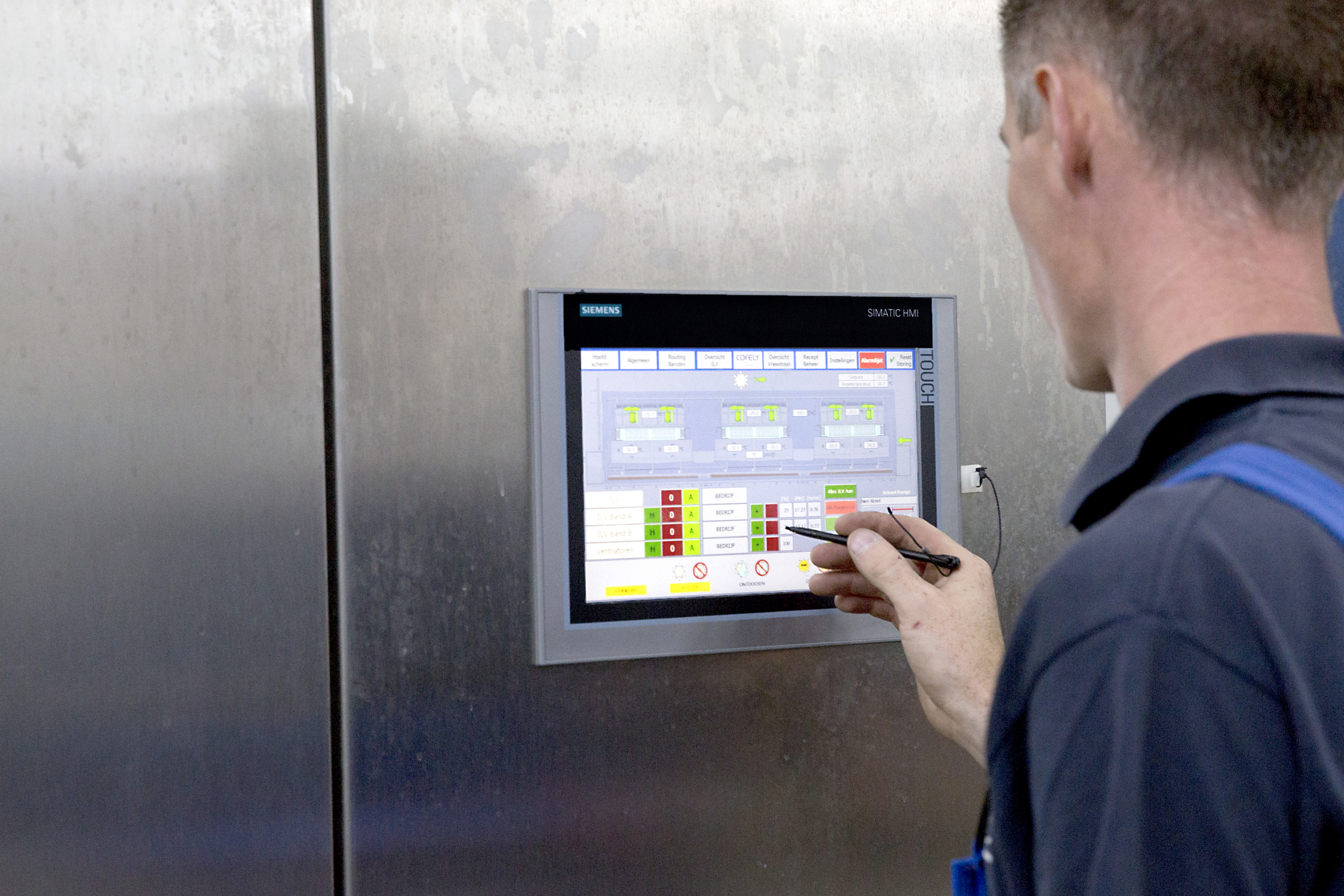
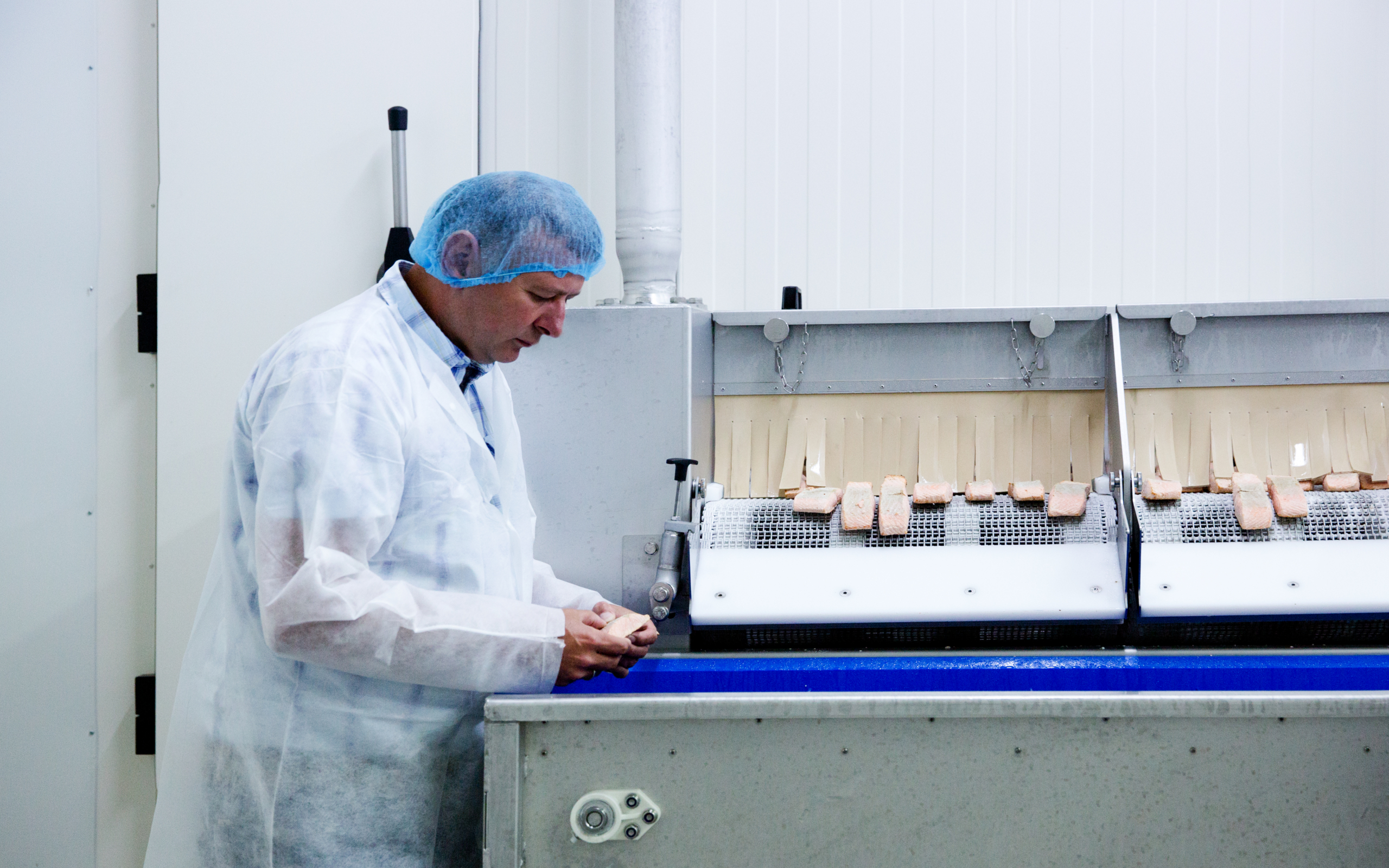
The new deep-freeze tunnel links up seamlessly with the permanent modernisation that Rodé Fish is aiming for, says Hoekstra. ‘Better and better quality, and more and more sustainable. With our new deep-freeze tunnel, we’ve taken significant steps towards greater efficiency, quality and sustainability. Equans organised the process perfectly and delivered on all its promises to improve quality, efficiency and sustainability.’

